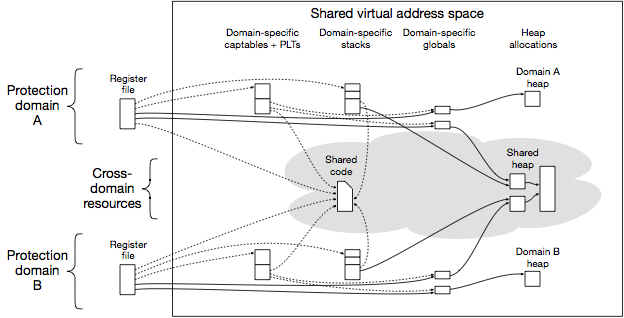CHERI

CHERI Software Compartmentalization
The CHERI protection model provides a set of low-level primitives that enable scalable, fine-grained software compartmentalization. These primitives can be used to implement a variety of software-layer models pursuing different software operational models We have implemented multiple prototypes of potential models, including the following, which are implemented in our CheriBSD operating system. Note that these are experimental prototypes, and are not yet believed to provide strong containment.
Colocated processes (co-processes)
In this model, multiple UNIX processes run colocated within a single virtual address space, separated by CHERI rather than using multiple MMU page tables. CHERI enables faster process switching through exception-free, capability-based and higher bandwidth communication channels; in early FPGA-based measurements, we have seen 1-2 orders of magnitude improvements. Coprocesses inherit the integrity, confidentiality, and availability properties of the UNIX process model. This model requires eliminating fork() to create colocated processes, which interacts with the common zygote performance optimization for sandboxed programs. There is an initial prototype of this model in a CheriBSD development branch, which runs on the CHERI-RISC-V architecture. A port to the Morello architecture is in progress.
Compartmentalized shared libraries
In this model, a compartmentalizing run-time linker constraints arbitrary code execution within shared libraries to linkage declared in ELF, as well as any policy constraints on linkage. Compartmentalized shared libraries have strong confidentality and integrity properties, but not additional availability properties. An initial prototype of this model shipped in CheriBSD 22.12, and runs on the Morello architecture. We plan to also develop support for the CHERI-RISC-V architecture.
